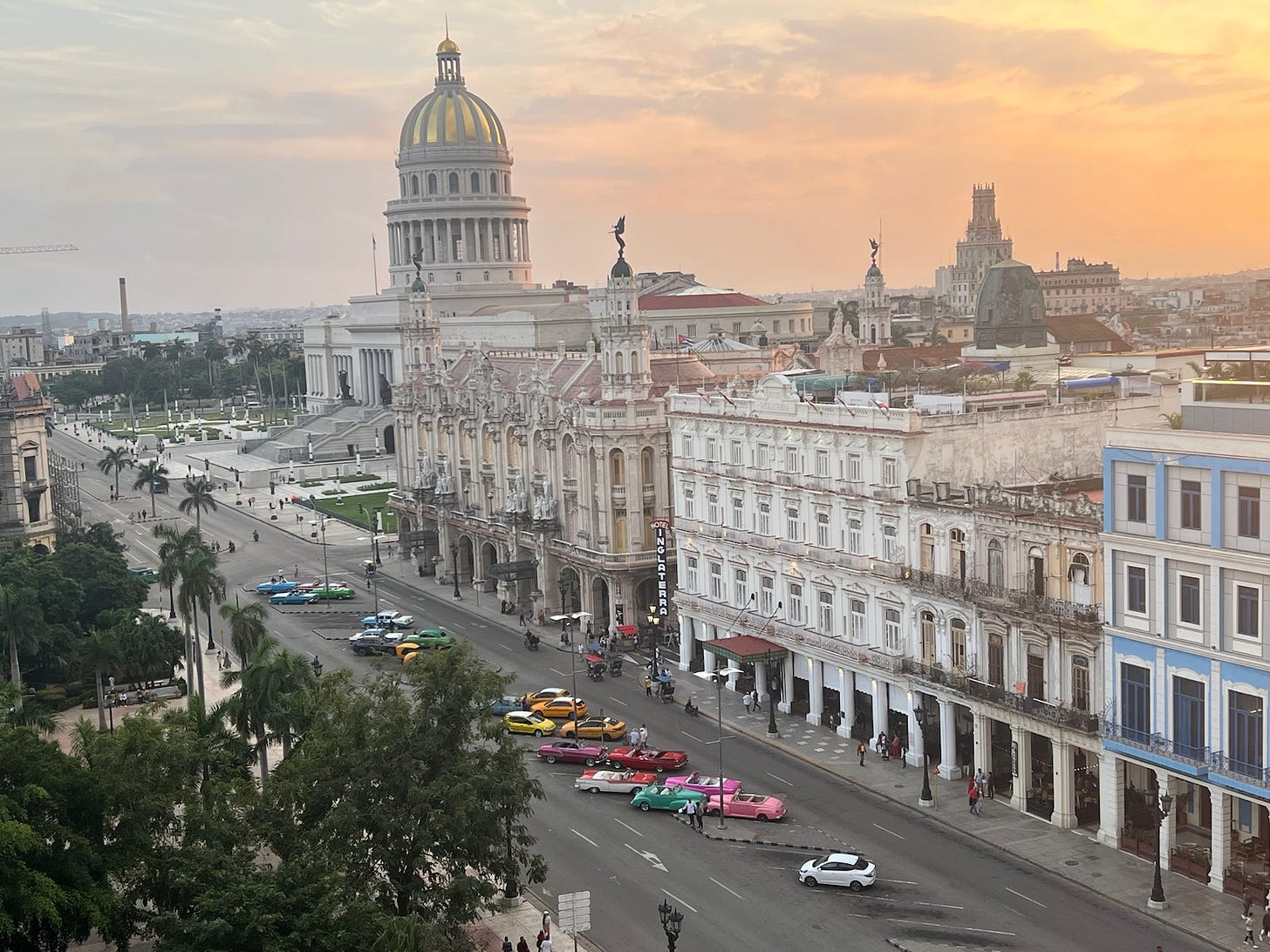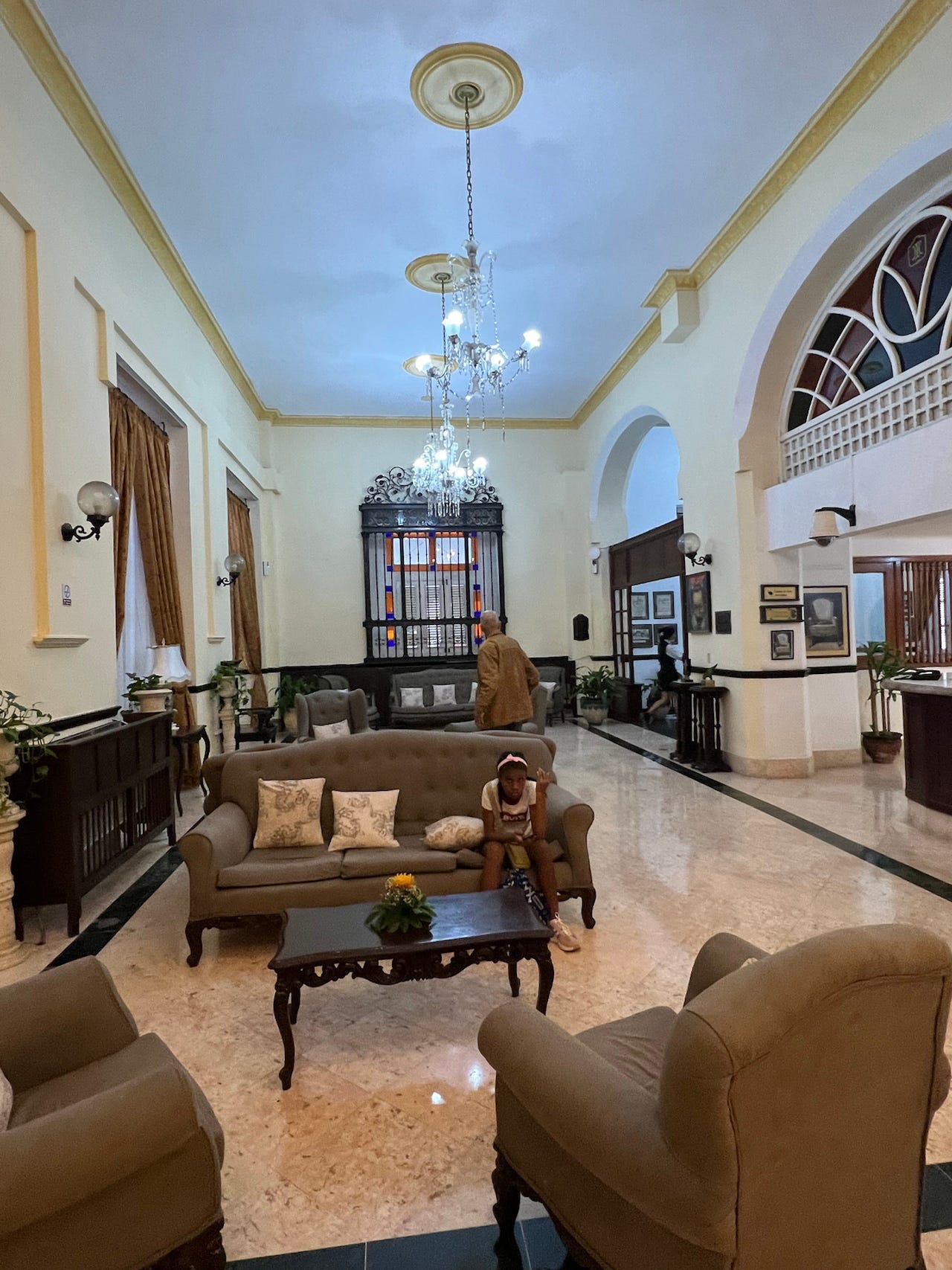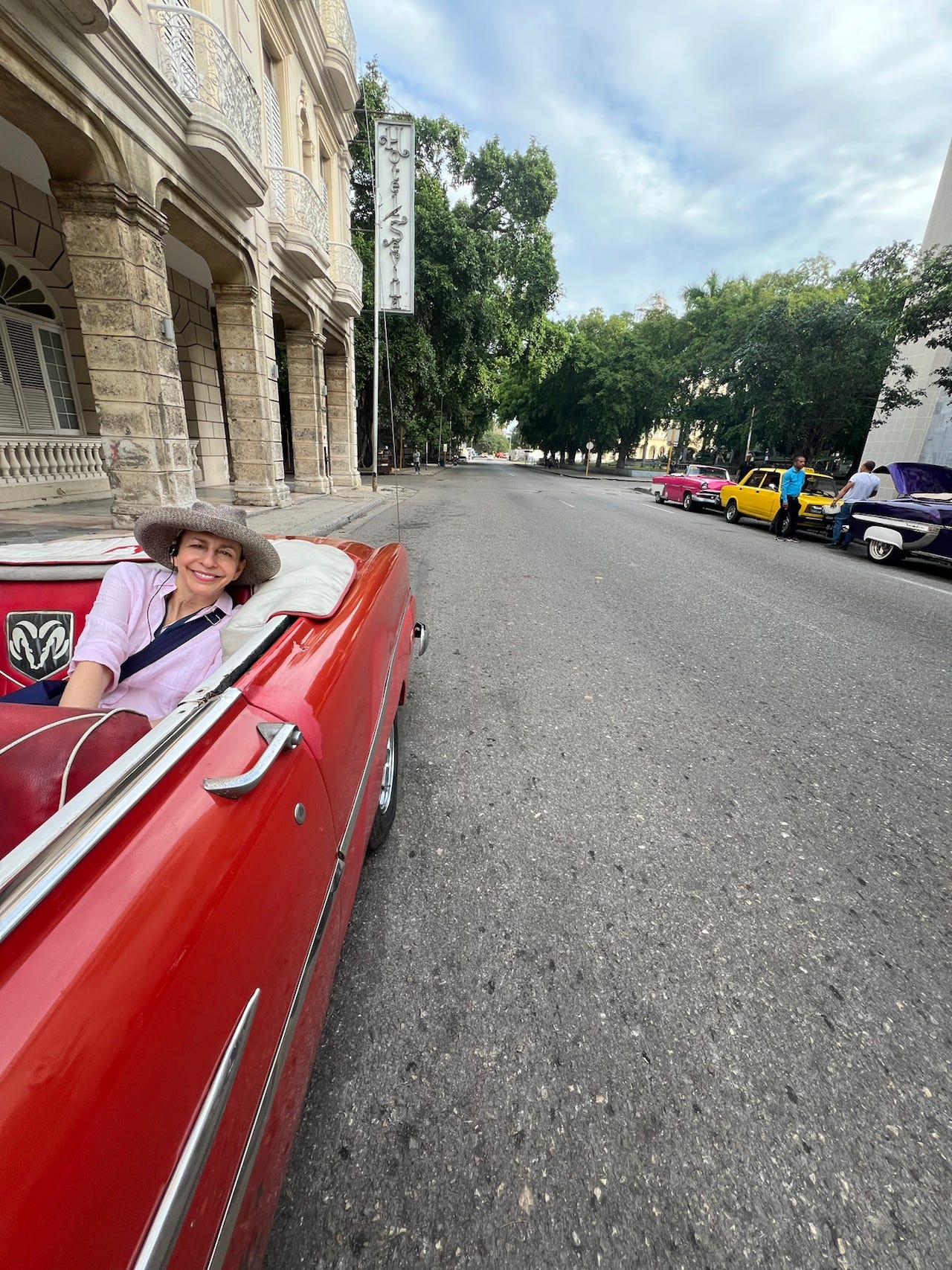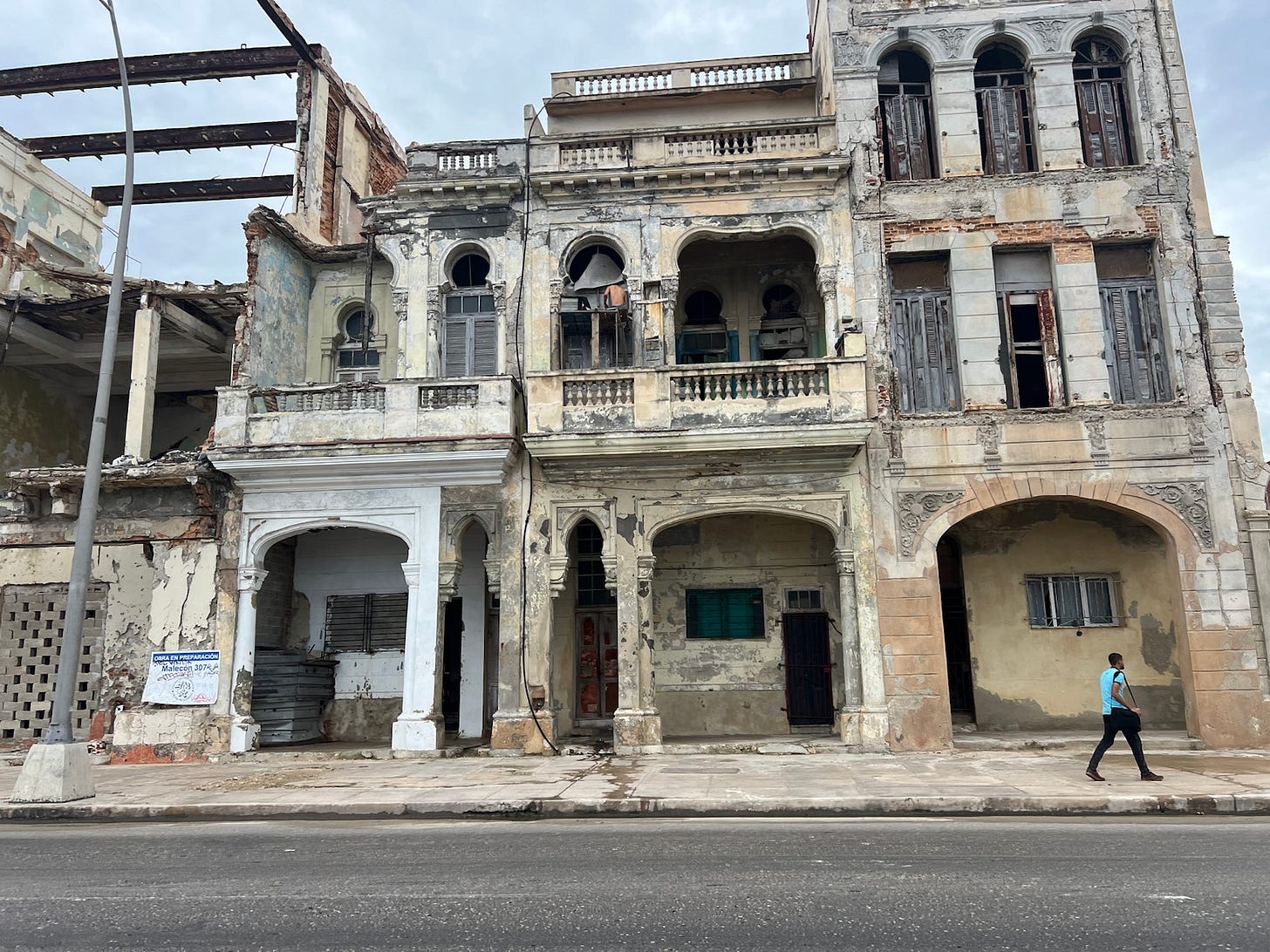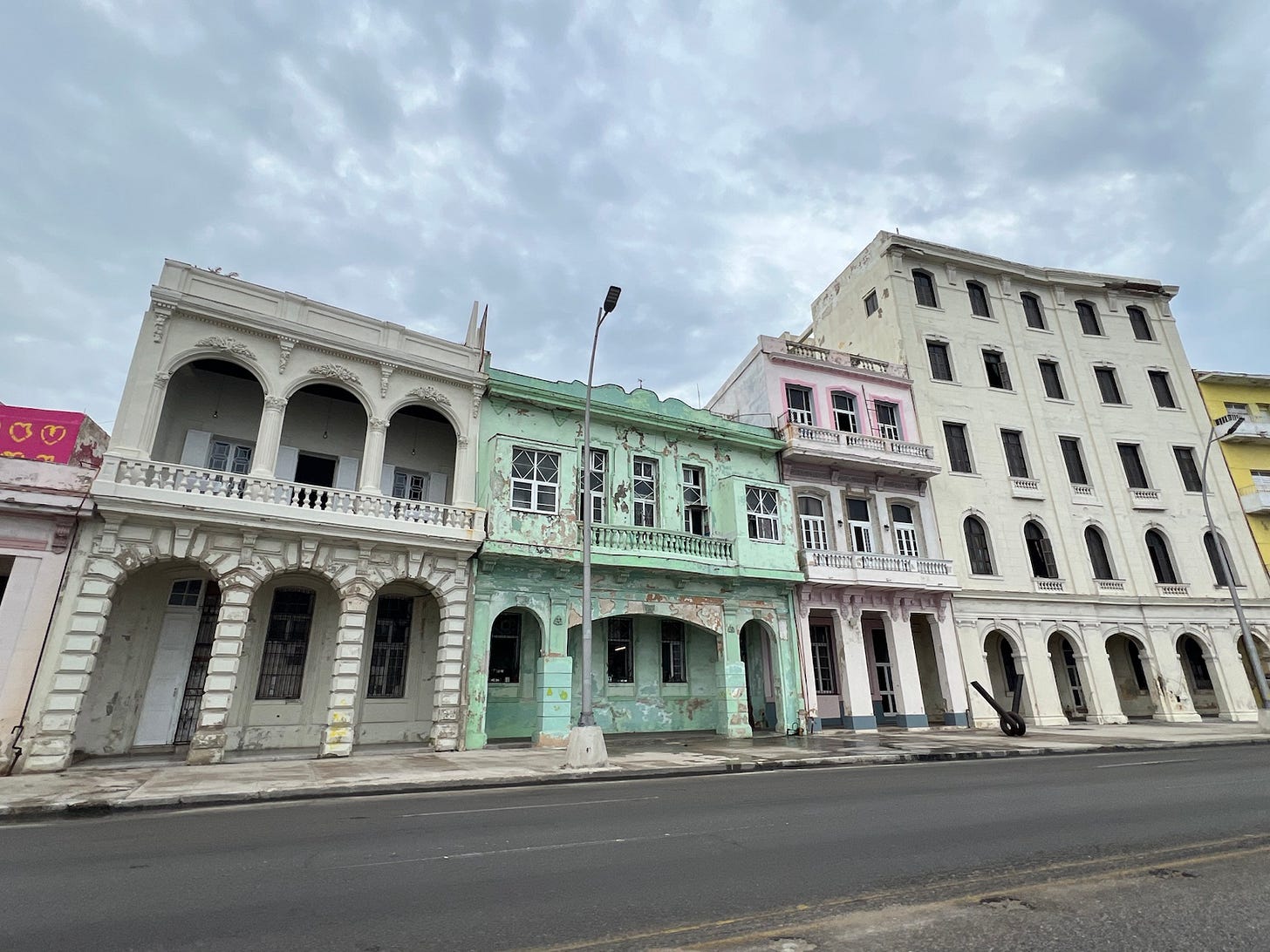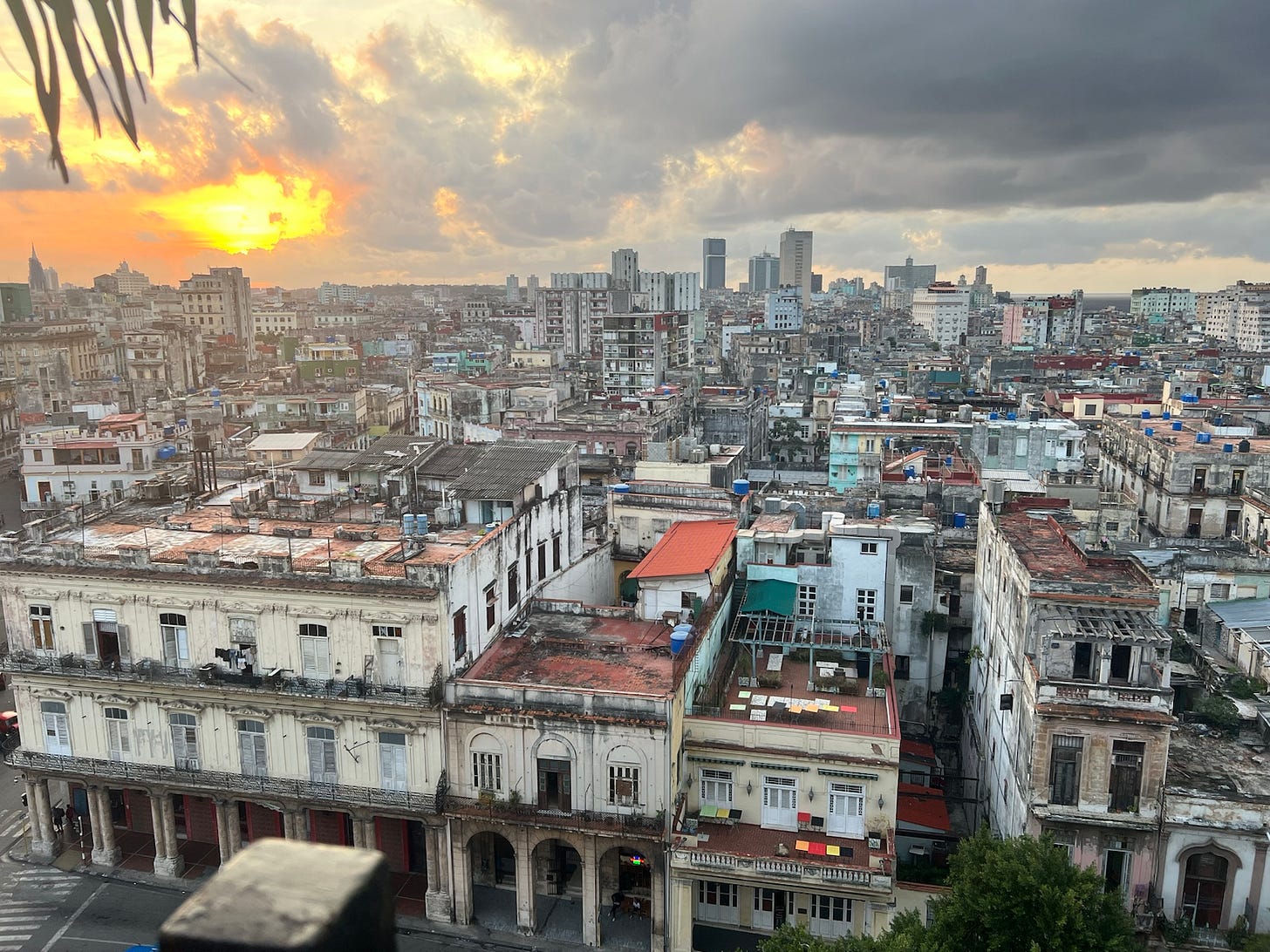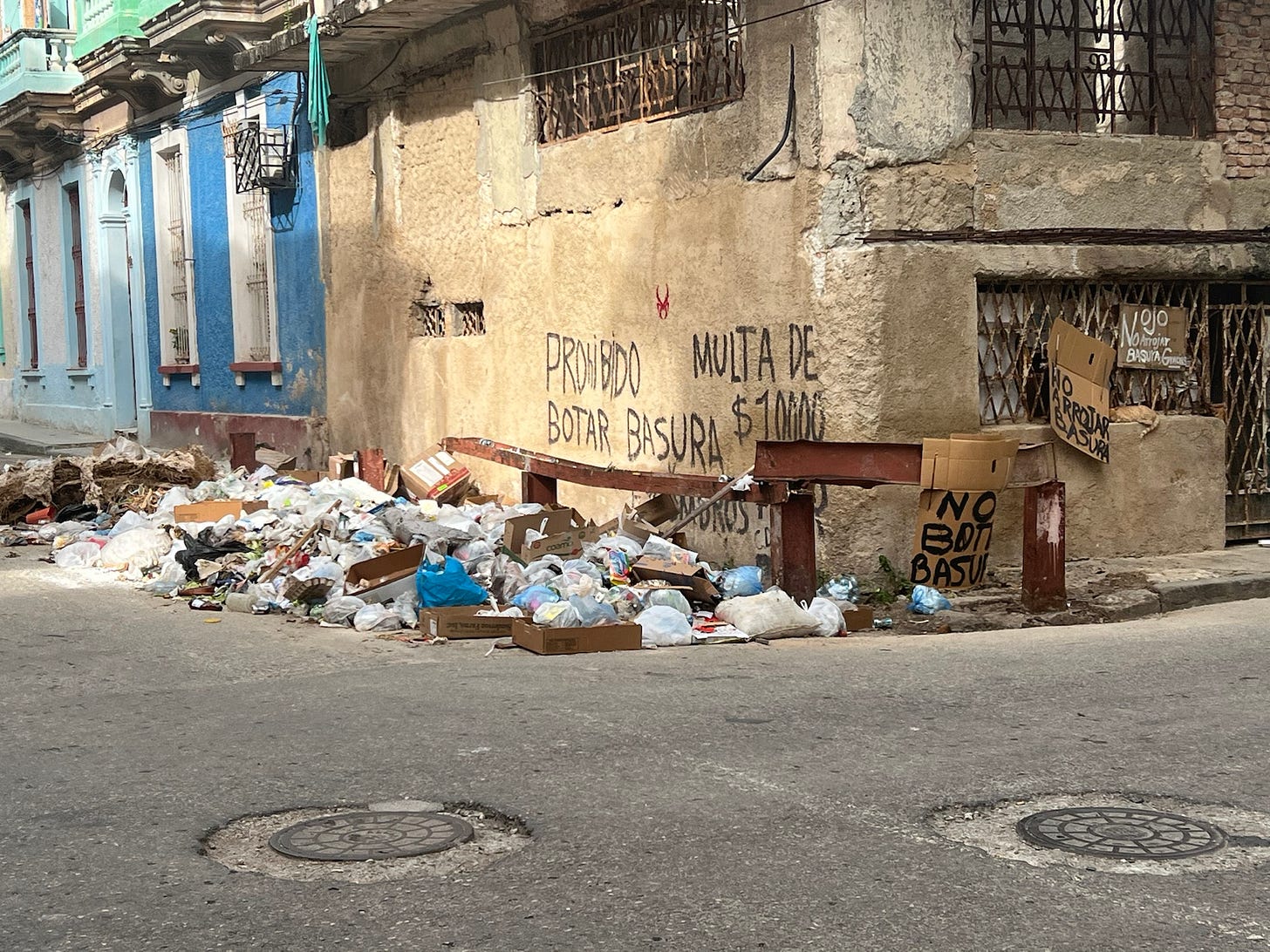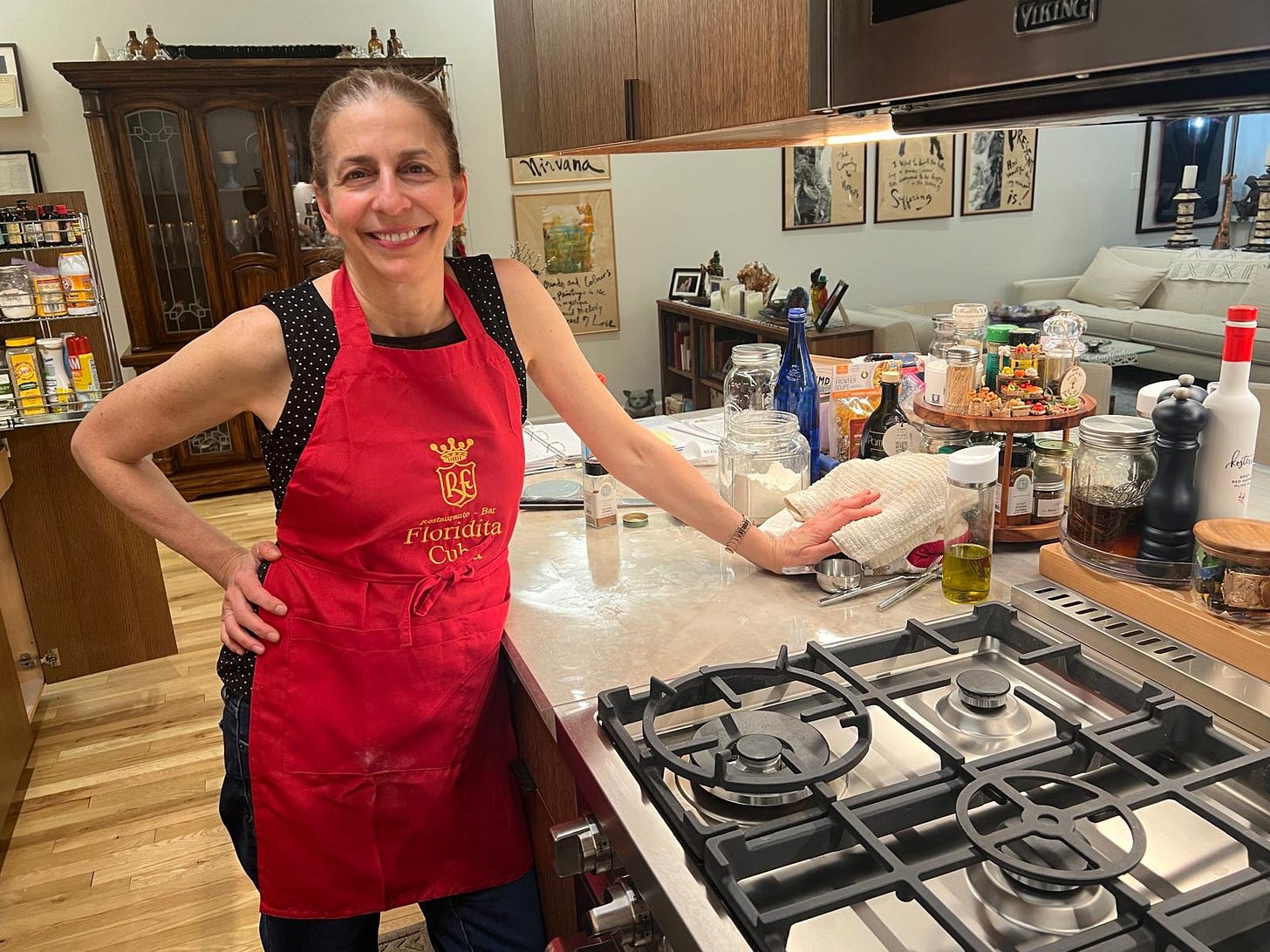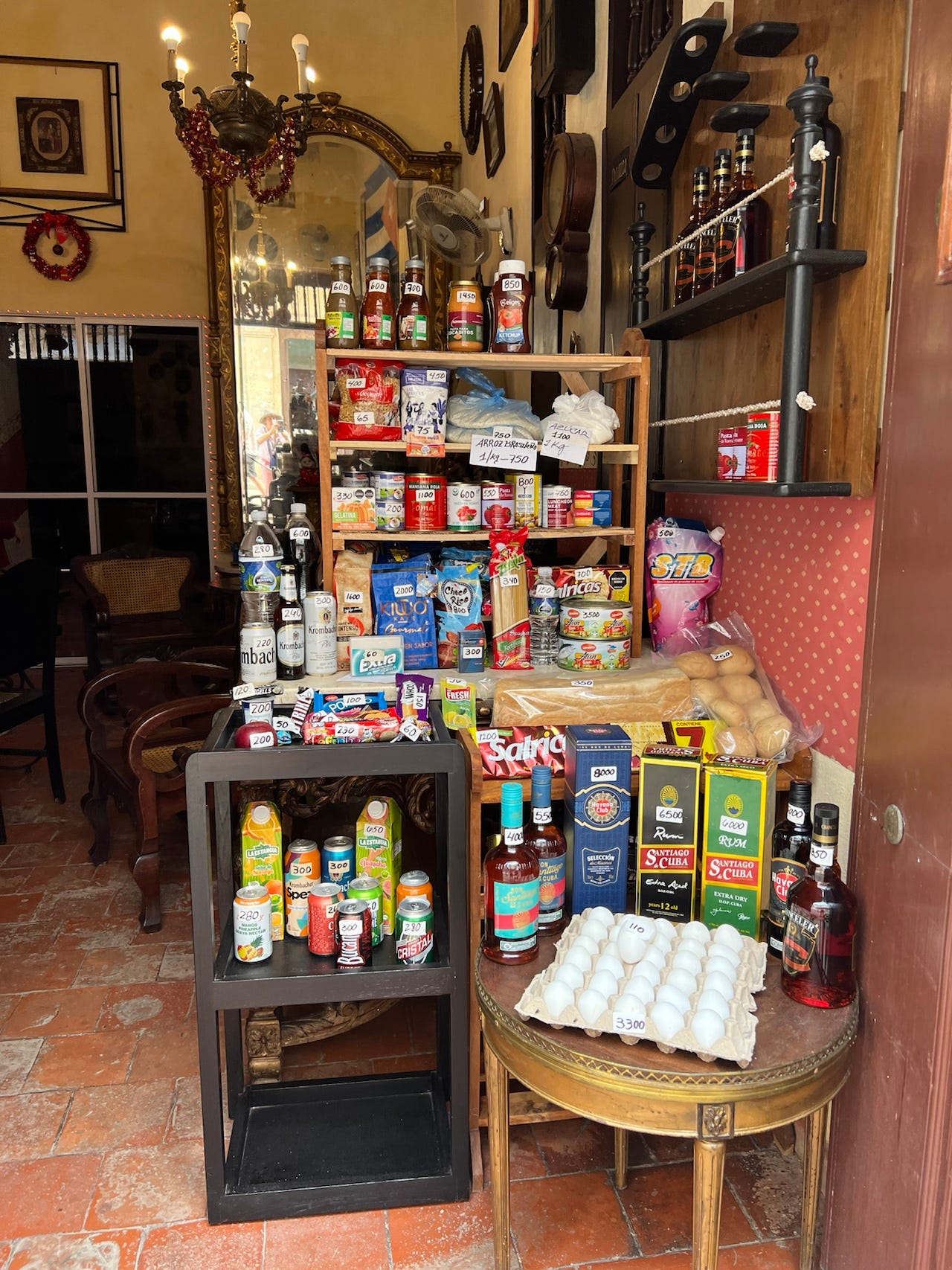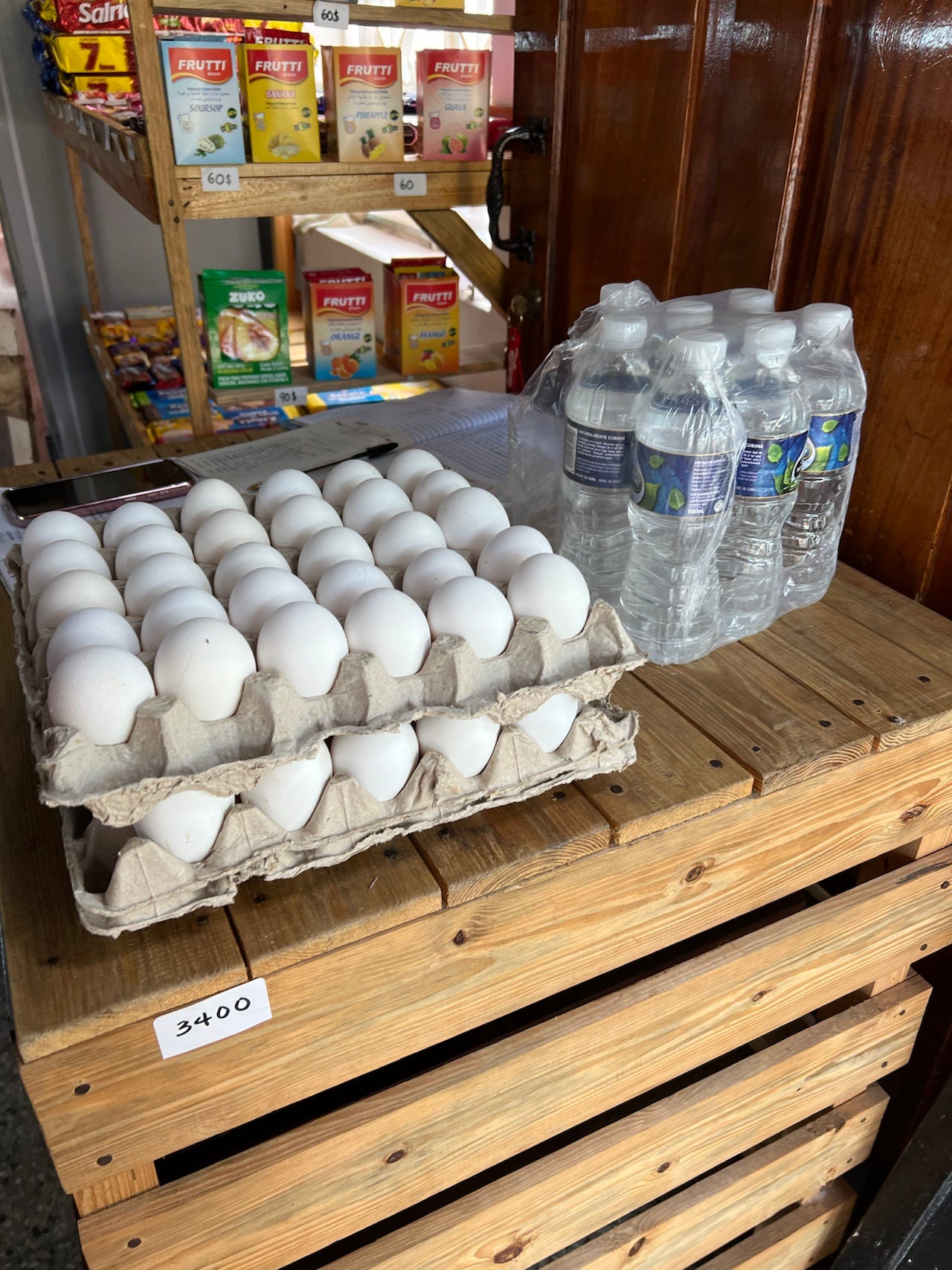30 eggs and a bottle of vegetable oil
Cuba and food
I started a kitchen blog because food is a universal way to connect with others and build community. It also lets me share my beliefs: First, a vegetable is added to every meal, followed by protein, fat, and carbs. Second, cut refined sugar. Third, exercise. Together, they make a trifecta of good health.
Food sustains life and gives us the energy to hope for a good day. Everyone should have access to it at a reasonable cost. This blog is about food, not politics, so I generally focus on the ingredients of a good kitchen, not the outcomes of a good election.
Still, depending on where you are, it’s hard to fully explore food without acknowledging a few contextual realities. Why are certain food staples in one country scarce in another? Often, the answer lies in economics—and frequently, in the economics of politics.
One can hope for a perfect world, kitchen, or cuisine, but sometimes, circumstances are beyond anyone’s control. This is a reality for many Cubans. It’s worth looking at the city's situation to understand the food challenges.
A Look at Havana
Cuba is just a 45-minute flight from Miami. In Havana, its 16th-century Spanish heritage is most evident in La Habana Vieja (Old Havana), a UNESCO World Heritage site that is slowly being restored. The area is known for its carefully planned squares, cobblestone streets, and colonial landmarks like Plaza Vieja—all whispering stories of the island’s rich past.
Right between Havana's central and old parts is the Capitolio, a grand building that took several years to restore.
Nearby stands the oldest hotel in Havana, Hotel La Inglaterra. Step inside to see high ceilings, a chandelier dripping with lights, and vintage furniture from times gone by.
Other buildings on the Paseo del Prado, one of the city’s most iconic streets, tell a different story. Their old grandeur evokes the imagination of what they were like in their time. To me, they felt like symbols of resilience.
Please close your eyes and envision rows of pristine buildings, freshly painted in soft island hues, with handsome columns and romantic balconies of mini-mansions, some with manicured front lawns. I finally understood my high school Spanish teacher, who always spoke with fire in her voice, her words and expression carrying the weight of the Cuba she lost. She lived to 99. She was on my mind standing in Havana, a place I’d wanted to see because of her, the best Spanish teacher ever. It took me 48 years to get here.
With Havana, memories of beauty and the realities of hardship co-exist.
Standing on a rooftop, I was struck by decay— walls twisted where they should have been straight, garbage piled up in the distance.
Yet, even here, the promise of redemption stood out in chipped and faded peach, lime, and blue facades. Behind those walls were vibrant community music and dance projects, hand-crafted art, classic cars lovingly maintained, and food made with intention.
Cuban cuisine—hecho a mano. El mejor. I love that the food was center stage on the plate, not buried in sauces. We strive for that in the Fischer Kitchen. Call us an aspirational kitchen inspired by cultures worldwide, including Cuba.
“Complicated” time
Most Americans who visit Cuba can afford what they want and genuinely want to help the Cuban people. We packed with an eye toward what we could leave behind: Tylenol, toilet paper, health bars, soap, clothes, and Phil’s sneakers.
One of the other travelers had a compact bag stuffed with delicious and healthy snacks. “Feel how heavy this is,” she said. I picked it up—a mini anchor of goodwill.
If I could have brought my banana bread and homemade granola bars, I would have, but now that I have some Cuban followers—¡Hola, mis amigos y amigas! Estoy muy contenta porque ustedes siguen mi blog—I intend to make sure the recipes I post are readable enough so the message of the food is universal and that I have alternative ingredients for what they may not have in Cuba.
At the Floridita, a bar made famous by Ernest Hemingway, I asked a local woman if she’d ever had banana bread. She said no. I listed the simple ingredients, but she stopped me: “We don’t have applesauce.” “No worries,” I replied. “I’ll figure out an alternative.” I bought an apron from her and promised to wear it.
It's hard for Americans to completely grasp what complicated situations like this mean for the people. Generally, food is plentiful for us in America. We either have it, or it is available to purchase.
Phil and I sat at the outside café of Hotel Inglaterra, a National Monument of Cuba. Phil ordered a mojito and a ham-and-cheese sandwich on perfectly toasted homemade bread—an uncomplicated luxury that is not so simple for some.
As we ate, the music started. Two older figures began dancing on the sidewalk. The spirit of Havana moved everyone inside and outside the restaurant. I was in my Spanish teacher’s Havana. I hope she could see us there.
What I picked up about food from Cubans I met
Cubans often purchase food daily. Some of it may be for freshness, but more often, it’s because of cost and availability. Vegetables, essential to my daily meals, can be prohibitively expensive or simply unavailable for some.
Lechuga—lettuce—was plentiful. Tomatoes, cabbage, carrots, plantains, and root vegetables were in markets, on stands, and in old wooden carts whose time had passed, yet they were being pushed to go on, working.
I saw pork and ham hanging in stands, ready to be purchased. Various shops had packaged foods, which is better than nothing if little is available. People were milling around in all these food places, but it didn’t look like a run on the store.
I saw people buying from local markets and carts in carriable quantities. However, I didn’t see people purchasing more significant quantities than that, but that’s not to say it hasn’t happened somewhere—maybe. Given the complicated situation, it wasn’t clear it existed.
30 eggs and a bottle of vegetable oil
I spoke with a Cuban woman who was fortunate to have a job paying more than the typical state salary of about 3,000 CUP. She explained the ration card system, though rations aren’t always available.
The numbers highlight the complexity of the situation. The average monthly salary in Havana can reach 4,300 Cuban Pesos (CUP). Officially, 1 USD equals 24 CUP, but on the informal market, the rate is closer to 270 CUP per USD or even higher on the black market. Economic instability, government controls, limited foreign currency access, and inflation have all contributed to the wide gap between the official and informal CUP exchange rates.
Using the informal rate of 270 CUP per USD, 4,300 CUP is roughly $16 monthly. To get by, people rely on rationed goods, side jobs, remittances from abroad, tourism, bartering, free services, and frugality. Still, living on $16–$20 a month is hard for most Americans to imagine.
“How can we live on this?” she said calmly, a glint in her eyes the only hint of longing for better. “We can buy 30 eggs and an 8-ounce bottle of vegetable oil each month. Is this what our life is worth?”
Her words hung heavy in the air. I felt a sharp pang. There was a long pause.
“Maybe it will get better,” she said wistfully.
I reached for her hand. She gave me a small smile.
That line is burnished in my mind: Is this what our life is worth?
Where does Cuba go from here on food insecurity?
How can food availability be improved? How can this scarcity be resolved so that Cubans can enjoy the daily meals we, as tourists, can easily access?
This isn’t an isolated issue; it’s intertwined with politics, diplomacy, and history. Cultural understanding, tolerance, a frank and straightforward perspective of current global politics, and an honest vision of the future seem like good starting points for resolving the food issues in Cuba.
Regardless of history's burdens—many of them brutally borne by the Cuban people while politicians everywhere enjoy easy access to satisfying meals—the current food problems in Cuba should drive renewed efforts to address the situation. This recent New York Times article provides further perspective on the issues in Cuba.
Governments need to rise to the occasion. Without that action, the food issues, other shortages, and daily hardships will continue.
Suffering does not speak as loudly as guns. Conflicts drown out the suffering of the people. This should sound louder in the ears of politicians than it does, and this applies across the board. If it did, I wouldn’t have heard and seen so much about food, its cost, and availability.
Excellent guides helped
Our guides answered my endless questions about Cuban food. They led our experience with a humanitarian and empathetic view, asking us to understand the broader context of what we might see and keeping an open mind and heart.
At the start of the trip, one of our guides handed out a flyer. I read it and pointed out a line I liked to him. It read: “It reminds us that the world is vast, layered, and interconnected, defying simple categorizations.”
This is true. But at the level of the people and food, the Cuban woman's question lingers—“We can buy 30 eggs and an 8-ounce bottle of vegetable oil each month. Is this what our life is worth?”







